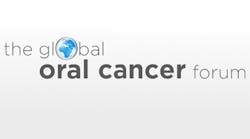Oral cancer screening: Where do we stand?
The Global Oral Cancer Forum Working Group 3 had as it charge the topic of “Screening for oral cancer—Who, what, why and where”? There were representatives from the United Kingdom, the United States, Saudi Arabia, Japan, India, and Brazil in this group. This paper will highlight the findings of the Working Group.
Oral cancer screening: Where we stand currently
The reviewers of a Cochrane systemic review found an inadequate amount evidence to recommend population-based screening programs. (1) The reviewers did state that “visual screening may reduce the mortality rate in users of tobacco, alcohol or both and can produce a stage shift.” (2) According to the Working Group, “the review concluded that targeted screening programmes could be effective in reducing oral cancer mortality. Nevertheless, further [randomized clinical trials] are warranted to provide the highest level of evidence for practice.” (1)
READ MORE | Tobacco use in India: How laws and awareness campaigns are empowering the public
There is no global consensus on routine screening for oral cancer. In the United Kingdom, a systematic population screening program is not recommended, and the United Kingdom National Screening Committee dictates 19 criteria for a screening to meet before it is eligible to be funded and implemented; their experts do not believe a reliable test has been identified. (3) You can view these 19 criteria on page 2 of the white paper. One study referred to in the white paper acknowledged that the criteria could be "rigorous and may be considered overly stringent.” (2) However, the forum offered help to dental practitioners by identifying criteria that are easily achievable or criteria that required more research.
The white paper focused much of its attention to explaining why some of the UK screening criteria may not be achievable based on the current research. After that process of elimination, the authors did recommend diligence among dental professionals in screening high-risk patients. They wrote, “Visual screening may reduce the mortality rate in users of tobacco, alcohol or both and can produce a stage shift. The review concluded that targeted screening programmes could be effective in reducing oral cancer mortality.” (2)
If a lesion is noted with a visual oral cavity examination, the following may be used: toluidine blue stain, fluorescence staining, exfoliative cytology, or brush biopsy. The only true test for malignancy is a biopsy where cells or tissues are excised for microscopic and histological examination.
White paper: A good screening test is not available
The Working Group found that while studies have shown that health-care workers (and dental professionals) are proficient in detecting lesions after receiving proper training, “care must be taken not to interpret these studies to mean that a good screening test is available . . . the data from these studies show that oral cancer screening using [conventional oral examination], even in high prevalence settings, does not reduce mortality in the population. The data do suggest however that screening of high risk groups may be effective in reducing mortality.” (2)
READ MORE | What happened: The Global Oral Cancer Forum
They cited the example of leukoplakia. The histology of the lesions influences its appearance and low likelihood of “progressing to oral cancer.” (2) They added, "A variety of new and emerging diagnostic aids and adjunctive techniques have been described to assist clinical diagnosis, but mostly these have been used to aid in categorisation of clinical lesions…” (2) In addition, they observed a Cochrane review conclusion that the tests evaluated in the literature cannot “be recommended as a replacement for the currently used diagnostic standard of a scalpel biopsy and histological assessment.” (2)
In their summary, the authors reiterated the need for routine screening of high-risk patients. They also identified areas of needed research, including "how opportunistic screening may be implemented, and in which health care environments.” (2)
It may interest you that, at the Global Oral Cancer Forum, a dentist from Australia stated that in the study he and his colleagues had just completed, dental hygienists had better accuracy in detecting lesions than dentists.
That being said, we should not become complacent. Awareness and education about risk factors is vital to help prevent or detect oral cavity cancer at an early stage when an intervention can decrease morbidity and mortality. The Oral Cancer Foundation has a plethora of resources available, as does Eva Grayzel in Six-Step Screening. Do your part to stop this disease!
I highly recommend you read the white paper in its entirety. Click here to access it.
References
1. Brocklehurst P, Kujan O, O’Malley LA, Ogden G, Shepherdc S, Glenny AM. Screening programmes for the early detection and prevention of oral cancer. Cochrane Database of Systematic Reviews 2013, Issue 11. Cited by: Speight PM, Epstein J, Kujan O, et al. Screening for oral cancer – Who, what, why and where? Global Oral Cancer Forum – Working Group 3. http://www.globaloralcancerforum.org/img/White-Paper-Group-3.pdf. Accessed March 31, 2016.
2. Speight PM, Epstein J, Kujan O, et al. Screening for oral cancer – Who, what, why and where? Global Oral Cancer Forum – Working Group 3. http://www.globaloralcancerforum.org/img/White-Paper-Group-3.pdf. Accessed March 31, 2016.
3. UK National Screening Committee. Criteria for appraising the viability, effectiveness and appropriateness of a screening programme. London, UK: National Screening Committee, 2003. Updated 2015: http://legacy.screening.nhs.uk/oralcancer. Cited by: Speight PM, Epstein J, Kujan O, et al. Screening for oral cancer – Who, what, why and where? Global Oral Cancer Forum – Working Group 3. http://www.globaloralcancerforum.org/img/White-Paper-Group-3.pdf. Accessed March 31, 2016.
